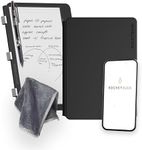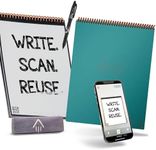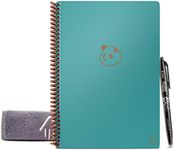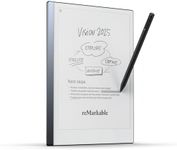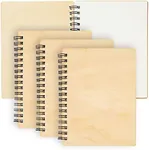Buying Guide for the Best Digital Note Pads
Digital notepads are a fantastic tool for anyone who wants to combine the traditional feel of writing with the convenience of digital technology. They allow you to take notes, sketch, and organize your thoughts in a digital format, which can be easily edited, stored, and shared. When choosing a digital notepad, it's important to consider several key specifications to ensure you get the best fit for your needs. Here are the most important specs to look at and how to navigate them.Screen SizeScreen size refers to the diagonal measurement of the display area. This is important because it affects how much space you have to write or draw. Smaller screens (around 6-8 inches) are more portable and easier to carry around, making them ideal for on-the-go use. Medium screens (9-11 inches) offer a balance between portability and writing space, suitable for most users. Larger screens (12 inches and above) provide ample space for detailed work and are great for artists or those who need to take extensive notes. Choose a screen size based on how you plan to use the digital notepad and how much portability you need.
ResolutionResolution is the number of pixels on the screen and determines the clarity and sharpness of the display. Higher resolution means more detailed and crisp images and text. For basic note-taking, a lower resolution (around 1024x768) may suffice. For more detailed work like drawing or graphic design, a higher resolution (1920x1080 or higher) is preferable. Consider what you will be using the digital notepad for and choose a resolution that meets those needs.
Battery LifeBattery life indicates how long the digital notepad can be used on a single charge. This is crucial for those who need to use their device for extended periods without access to a charger. Shorter battery life (up to 8 hours) might be sufficient for casual use or if you can charge it frequently. Medium battery life (8-12 hours) is good for a full day of use. Longer battery life (12 hours and above) is ideal for heavy users or those who travel often. Think about your daily usage patterns and choose a device with a battery life that will keep up with your needs.
Storage CapacityStorage capacity refers to how much data the digital notepad can hold. This includes notes, drawings, and any other files you might store on the device. Smaller storage (8-16GB) is adequate for basic note-taking and light use. Medium storage (32-64GB) is suitable for moderate use, including storing a fair amount of notes and drawings. Larger storage (128GB and above) is best for heavy users who need to store a lot of data or large files. Consider how much data you plan to store and choose a storage capacity that will accommodate your needs.
Stylus SensitivityStylus sensitivity refers to how well the digital notepad can detect the pressure and angle of the stylus. This is important for creating detailed and precise notes or drawings. Basic sensitivity (around 1024 pressure levels) is sufficient for simple note-taking. Medium sensitivity (2048-4096 pressure levels) offers more precision and is good for more detailed work. High sensitivity (8192 pressure levels and above) is ideal for artists and professionals who need the highest level of accuracy. Think about the type of work you will be doing and choose a stylus sensitivity that matches your needs.
Connectivity OptionsConnectivity options refer to how the digital notepad can connect to other devices or the internet. Common options include Wi-Fi, Bluetooth, and USB. Wi-Fi allows you to sync your notes to the cloud and access them from other devices. Bluetooth is useful for connecting to other devices like smartphones or tablets. USB ports are handy for transferring files directly. Consider how you plan to use the digital notepad and choose a device with the connectivity options that will make your workflow easier.


